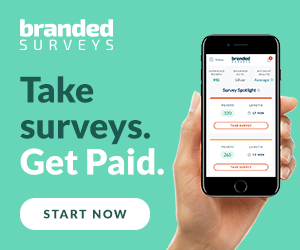A college education is extremely expensive, especially in America. Higher education can cost you big money out of pocket on top of thousands of dollars in federal or private loans. However, getting your education is extremely important, so this cost can be worth it for many people. That said, it is always in your best interest to find various outlets to help you pay for your education. In this article, we will be discussing how much a college education really costs, as well as several options to help you pay for it. We’ll also talk about financing your education with side hustles like paid surveys, food delivery, and more!
How Much Does College Really Cost?
How much your undergraduate or graduate education will cost is dependent on your specific degree and the university or college you choose to attend. Additionally, your total cost of attendance will depend a lot on the financial aid package you receive from the college or university.
Cost also varies depending on whether you attend a private or public university or are an in-state or out-of-state student. Since a bachelor’s degree and a master’s degree are two of the most popular degrees, we will talk about the average cost of those.
Bachelor’s Degree
The average cost of attendance to get a bachelor’s degree at a four-year institution is $35,331. Attendance costs encompass everything you will have to pay for during your degree, including room and board, books, meal plans, tuition, and more. The average cost of tuition at any four-year college or university is $28,775. Of course, with things like part-time jobs, work studies, or scholarships, you will likely end up paying significantly less, but this is one number to base your estimates on.
Master’s Degree
Many people choose to get a master’s degree immediately after graduating with their bachelor’s degree. However, this secondary degree adds additional cost to your overall debt, and master’s degree credit hours are typically more expensive than undergraduate coursework.
A typical public or private institution costs around $30,000 to $40,000 for a master’s degree. However, if you want to attend a prestigious university with many connections, these costs can go up to $100,000! But, again, this cost depends a lot on how long your degree will take, how many credit hours it is, and what your program of study is.
In-State vs. Out-of-State
Your cost of attendance for any degree or university will also depend significantly on whether you are an in-state or out-of-state student. For the most part, this only applies to public universities, which are funded partially by state governments. Private universities and colleges typically do not distinguish between in-state and out-of-state students.
At a public university, students that live within the state who attend the institution typically have deeply discounted tuition rates compared to students coming from out of state. The institution also might offer additional scholarships or grants to in-state students. Going to a public university within your state of residence can have major financial advantages, but it is not entirely necessary.
How Can I Possibly Get a College Education When It Is So Costly?
Those costs we showed you above are the “listed prices” of higher education—meaning that’s what you would pay for college if you had to finance it out of pocket. But most people cannot afford to pay for the entirety of their education outright. Are there alternatives? Yes!
Thankfully, there are plenty of alternative ways to pay for a college education. And they can significantly lighten the load for you and your family. In the next section of this article, we will discuss federal and private loans, scholarships, grants, work-study, and side hustles to help you pay for your degree(s).
Alternative Ways to Pay for College
If you want a college education, you should never let a lack of money hinder you from pursuing your dreams. Many prospective students give up when they discover how much it costs to go to college. Yet there are many programs to help you pay for your higher education.
Loans
Generally, there are two types of financial aid: money that needs to be repaid and money that does not need to be repaid. Loans are one type of financial aid that does need to be repaid, and the amount of money you end up owing will be dependent on the terms and conditions of the specific loan you take out. There are two main types of loans for education purposes: federal loans and loans from private banks.
Federal Loans
Federal Student Aid, an office within the US Department of Education, is the largest provider of federal student funds in the United States. Federal Student Aid provides financial aid in a variety of different ways, including grants, loans, and work-study funds, but the bulk of money you will be looking at is likely coming from loans.
Federal student loans get repaid with interest over time after completing your education, so you end up paying back more money than you took out with these added interest costs. Currently, some federal student loans are in the process of being forgiven by the government, so there is an added potential that some loans will not need to be repaid.
Private Loans
Private loans are similar to federal student loans, except that they come from private banks or lending companies. Private student loans give you the added benefit of higher borrowing limits. This can be beneficial if you want to attend a particularly expensive college or university.
Additionally, private loans give you rewards for better credit, meaning that with every on-time payment, you contribute to your credit score. You can also sometimes get favorable terms with good credit, and you will have a wider variety of lenders to choose from.
Scholarships
Scholarships are one type of aid that does not need to be repaid. They can be offered by virtually any business, person, website, or other entity. There are millions of dollars in scholarship funds available in your local area and online, so it just comes down to searching for the right scholarships for you!
Scholarships will vary in amount and application process. Some will be lengthy and require essays and interviews, while others might only ask for your personal information and institution. And the good news is you can qualify for more than just one scholarship to help you pay for college.
Grants
Grants, similar to scholarships, are a type of aid that does not need to be repaid. While scholarships are typically merit-based or experience-based, grants are usually based on financial need. Grants typically come from government entities or professional organizations.
Work-Study
Work-study is a federal program designed to give graduate or undergraduate students part-time jobs to help them fund their education. The program encourages students to work in a field related to their interests and educational goals.
Jobs are available to students both on and off-campus, and you will make at least the federal minimum wage regardless of what job you perform. You can either be paid by the hour or salaried, but your school must pay you at least once a month.
 Side Hustles
Side Hustles
Another option for paying for your education is engaging in a side hustle. A side hustle is a side job or gig that enables you to have another income stream. In today’s gig economy, side hustles are more popular than ever, and many students have more than one.
One popular side hustle people use to make extra money is taking paid online surveys. This gig is particularly well suited to students because they can take surveys for money 24 hours a day, 365 days a year! While you won’t make enough to pay for your entire education, it can offer you enough extra money to afford lunch at school, buy coffee, or go to the movies.
Another reason students like the survey gig is because you can get paid to take surveys on your phone. That makes it convenient for students to make a little cash between classes, while lounging around, or any other time their phone is handy. And let’s face it, your phone is always nearby if you’re a student!
Similar side hustles that can help you make money for college include:
- Online tutoring
- Becoming a YouTube influencer
- Pet sitting or dog-walking
- Starting a blog
- Delivering food
- Driving for Uber or Lift
- Cleaning houses
- Become an Amazon affiliate
Closing Thoughts
Higher education is expensive. But it is also the gateway to better-paying jobs over the long haul. Unfortunately, many people don’t even consider going to college because they assume they won’t be able to afford it. But many colleges offer tons of financial help for students to pay for their education.
With financial aid, scholarships, and a few carefully selected side-hustles, becoming a college student might actually be within reach! So don’t give up before thoroughly exploring all the avenues above.



 Side Hustles
Side Hustles







